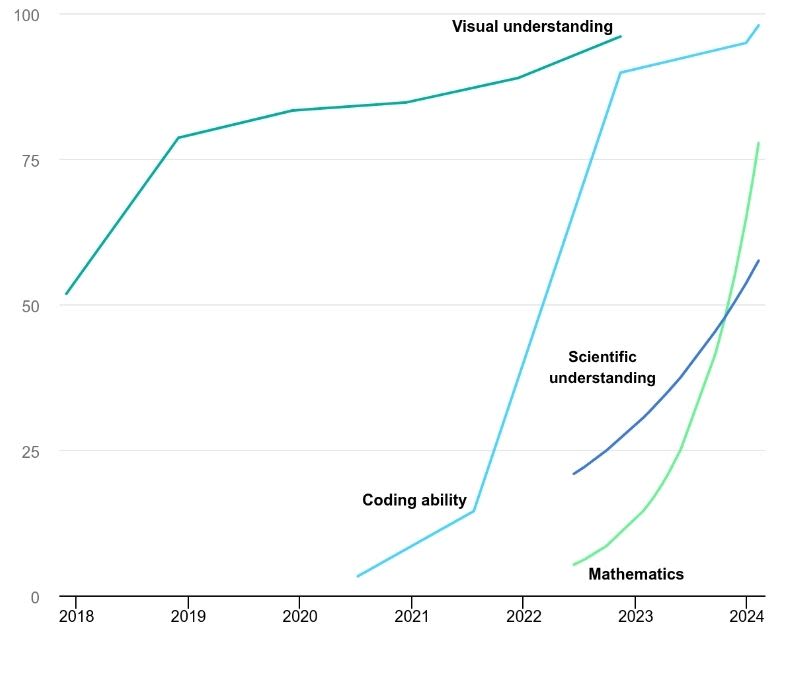Trusted research in the age of AI:
the journey to ScienceDirect AI

Trusted research in the age of AI:
the journey to ScienceDirect AI

By Adam Green
Researchers grapple with an ever-growing volume of information and need to quickly get accurate insights they can rely on. Yet, until now, they have been wary of using AI tools because they are not based on verified content and prone to making things up.
ScienceDirect AI addresses their concerns by being designed to prioritise accuracy first.

As the AI revolution deepens, its promise of increased productivity and liberation from tedious, labour-intensive tasks, is beckoning across all industries and disciplines. The world of academic research is no exception.
“The way research is done is changing,” says Professor Paulo Botelho Pires of the Accounting and Business School at Porto Polytechnic, in Portugal. “Today, no one does accounting with just a paper and pen. No one does financial forecasting with just a calculator. So why should researchers continue to do things the old way?”
A plethora of artificial intelligence (AI) research tools are coming to market, offering speed and efficiency. But reliability continues to be a concern. One benchmark study by the International Energy Agency found that AI models have reached high levels of accuracy in the fields of coding and visual understanding. In the sciences, however, the accuracy of AI tools can be as low as 57.5 percent. This is especially worrying in fields like medicine, where inaccuracies could lead to harm and negatively affect patient care.
Successive waves of many AI models have been unable to crack the problem. Indeed, as AI models advance, “hallucinations”, or faulty answers, appear to be on the rise. The error rate in newer AI systems reached as high as 79 percent, according to one test by OpenAI, reported by the New York Times. The latest research agents exhibit the same flaws and vulnerabilities as earlier search and summarisation tools, including a tendency to “create” data that does not exist.
Elsevier, the world’s leading scientific publisher, and part of RELX, believes there is another route to making AI tools safe for scientific research. Its new research tool, ScienceDirect AI, uses a closed system to train its AI model, meaning it only draws on ScienceDirect’s deep and verified database of millions of peer-reviewed research articles from Elsevier’s 3,000-strong portfolio of journals as well as those from other publishers.
Accuracy of AI models in selected benchmarks (2018-2024), The International Energy Agency (IEA)
Accuracy of AI models in selected benchmarks (2018-2024), The International Energy Agency (IEA)
Judson Dunham, Senior Director of Product Management at Elsevier, says ScienceDirect AI, launched in March 2025, aims to address the inaccuracies of other models and provide insights from trusted peer reviewed content.
“Our offering to customers as well as partner publishers is that we’re creating a safer way to benefit from this technology while minimising its tendency to making things up," he says.
He continues, "we did not set out to make a chatbot over ScienceDirect. Instead, we turned the database of documents into a knowledgebase of insights and then use the LLMs and associated technologies to enable users to easily find, extract, synthesise and summarise those insights in response to natural language queries."
As with all ScienceDirect’s technological advances, researchers have been central to the development of ScienceDirect AI. The tool was created in collaboration with 30,000 researchers and 70 institutions, and in-depth design meetings involving product designers, researchers and data scientists were a key part of the process.
“It’s how we keep ourselves honest and focused, because we have customers in the room too” Dunham says.
“...we’re creating a safer way to benefit from this technology while minimising its tendency to making things up.”

Judson Dunham
Senior Director of Product Management at Elsevier
ScienceDirect AI was created in collaboration with:
3,000
researchers
70
institutions



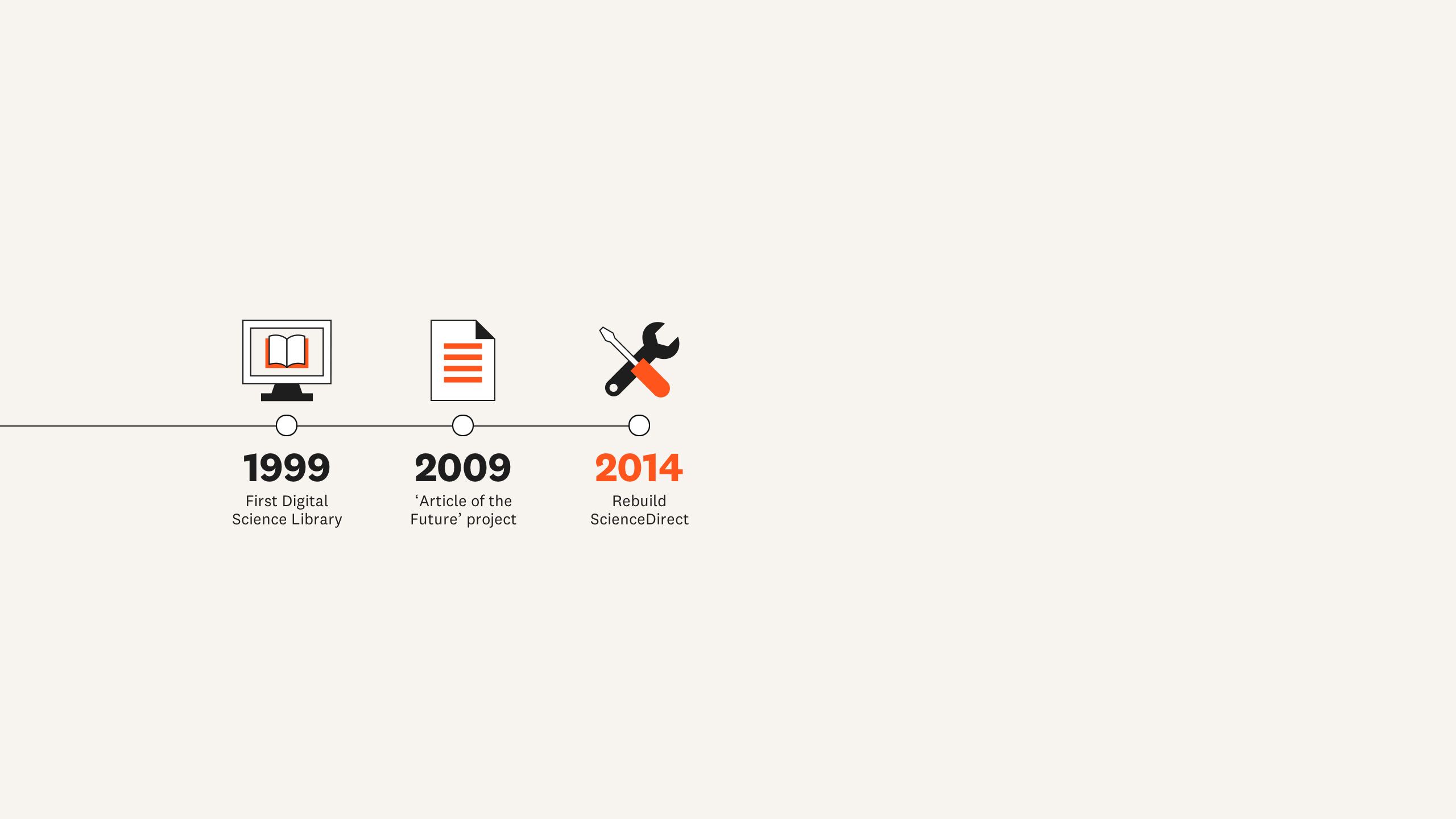
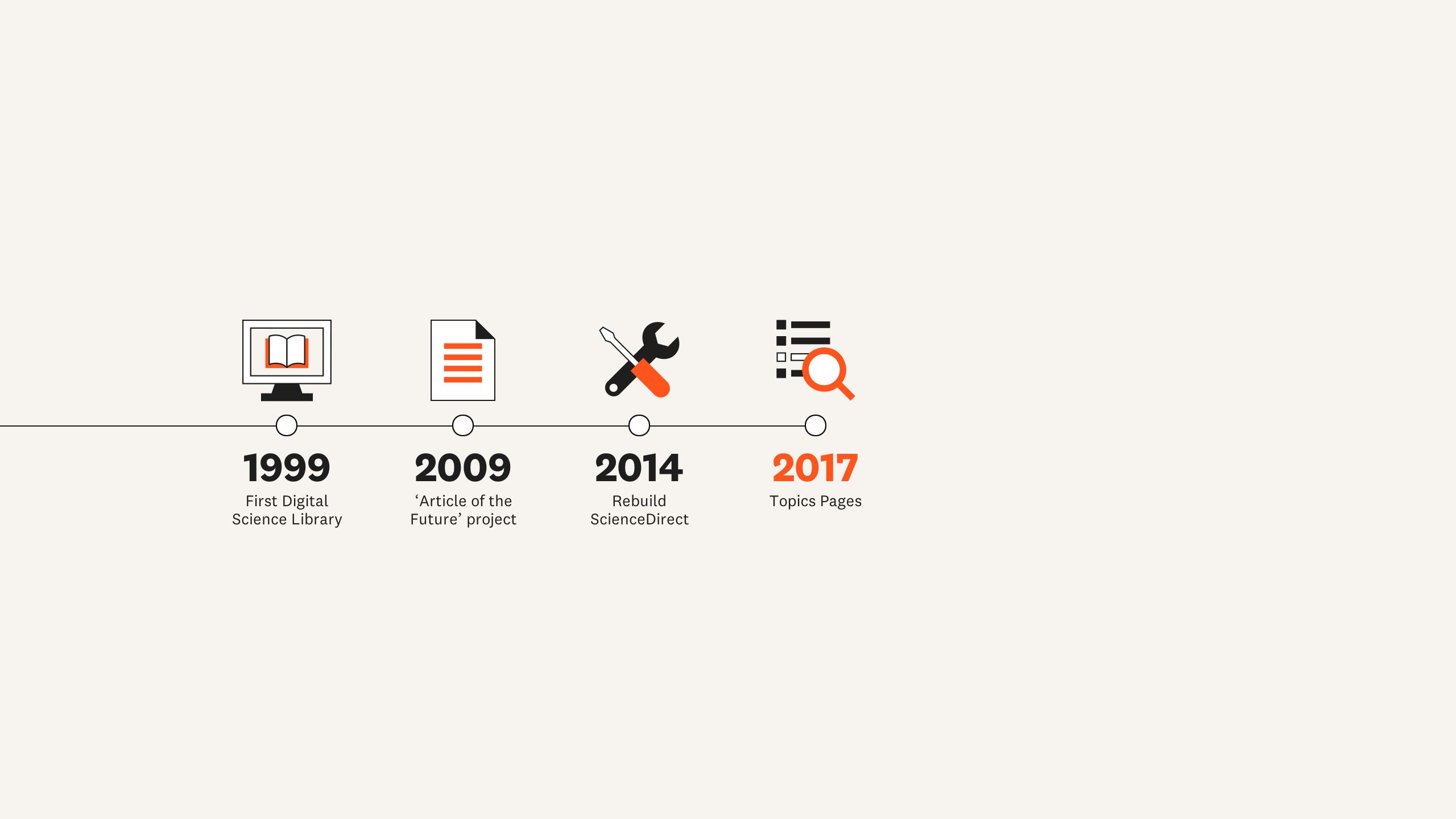
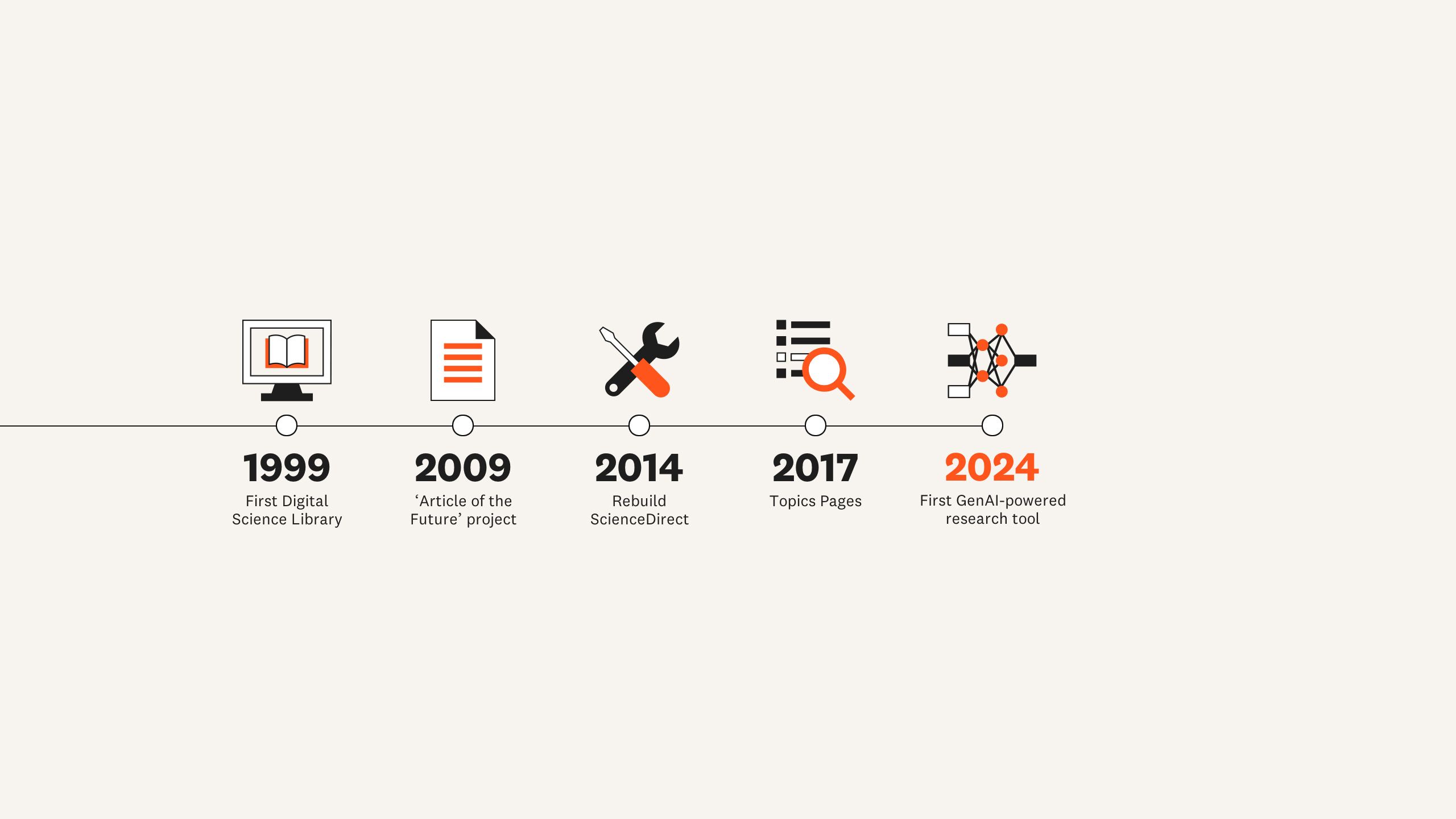
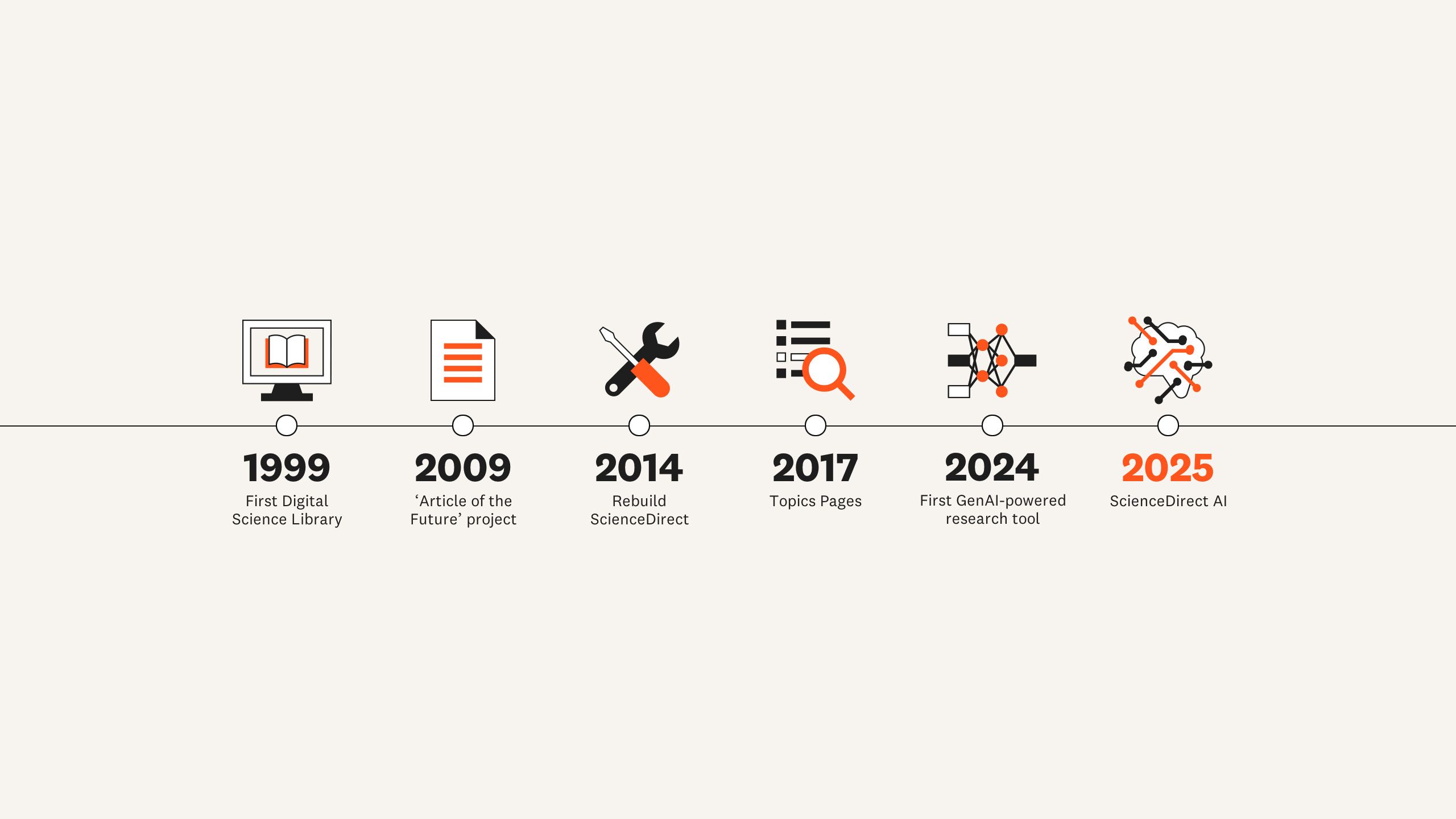
A quarter-century of innovation
The new AI tool is the latest milestone in a rich history of innovation.
Launched by Elsevier in 1999, ScienceDirect was the first online library of electronic scientific books and articles. Today, it is the world's largest platform dedicated to peer-reviewed primary scientific and medical research and ranks as one of the top websites globally.
The numbers are big. More than 20m users access the platform each month. It hosts over 22m pieces of content from over 5,100 journals and over 48,000 e-books. In 2024, it published 720,000 new articles from over 3.5m submitted. In the 12 months to June 2025, over 2.7bn articles were viewed and downloaded from the platform.
The platform also ranks highest in accessibility.
From the outset, ScienceDirect has remained at the forefront of emerging technology while upholding the highest standards of quality, innovating with the researcher experience firmly in mind. For example, the Article of the Future project, which began in 2009, enhanced pdfs of research articles by introducing interactive charts and allowing contextual information to be displayed in different viewing panes on the same page.
Another technological turning point came in 2014. “We completely re-architected the entire back end of ScienceDirect. It moved from this monolith to a very flexible platform that’s built on microservices,” says Rose L’Huillier, Senior Vice President for Researchers and Librarians Solutions at Elsevier. The overhaul also delivered a fast and improved search function that returns results in seconds.

Rose L’Huillier
Senior Vice President for Researchers and Librarians Solutions at Elsevier
2017 saw the arrival of Topics Pages, which provides useful summaries and extracts aimed at getting users up to speed with new topics. The summaries are written by subject-matter experts who use machine learning to mine Elsevier’s vast store of reference material for pertinent information.





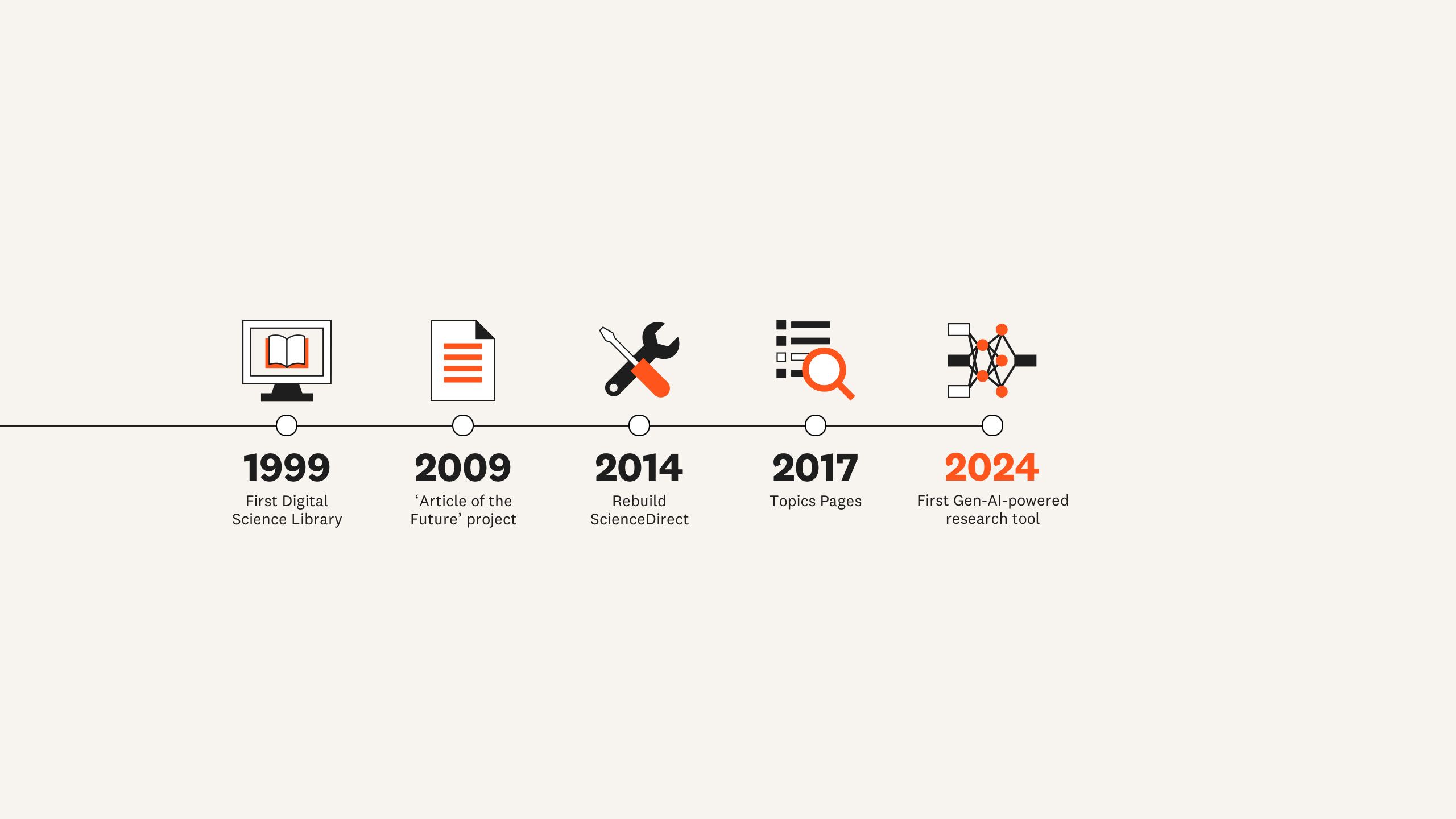
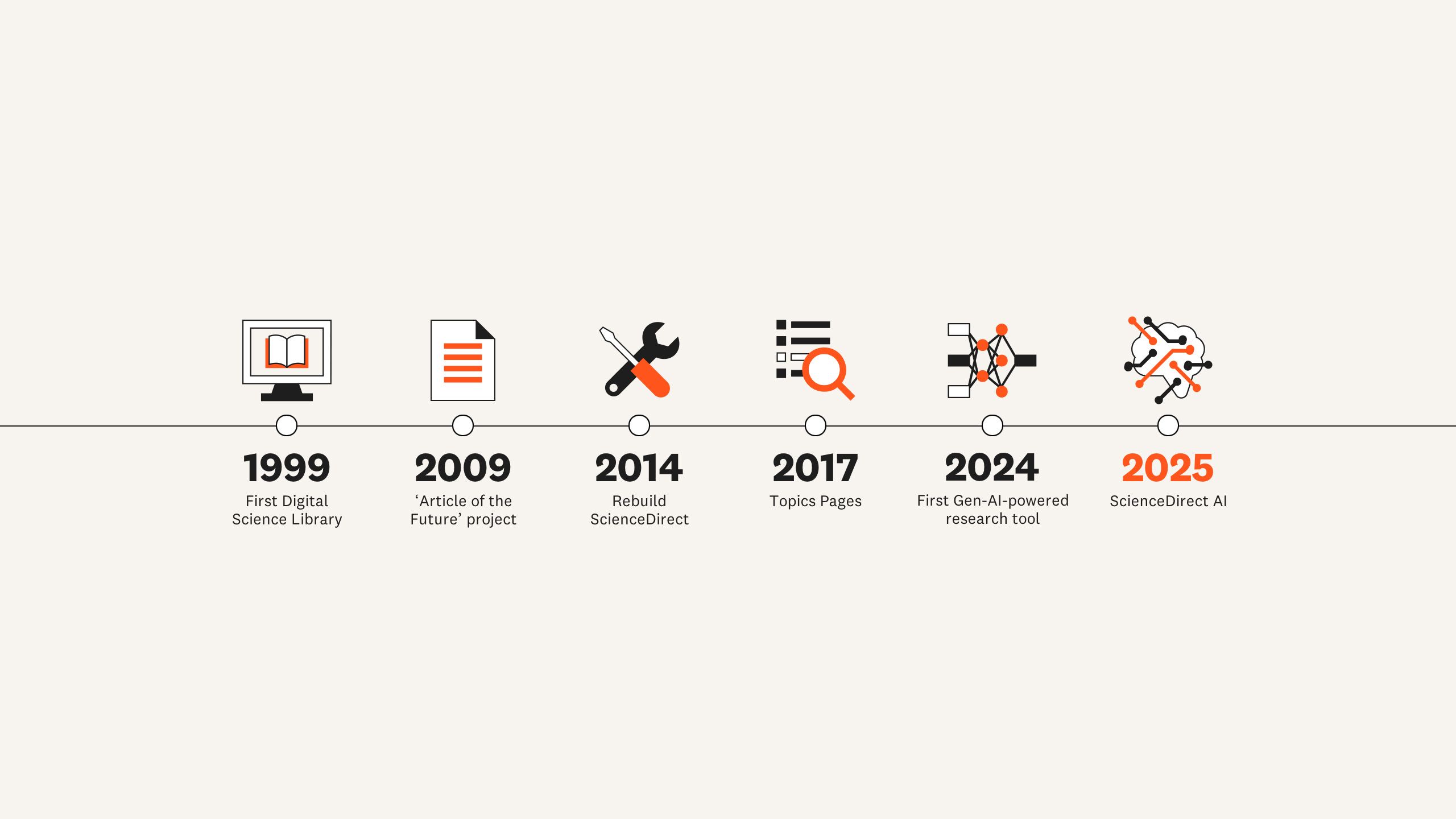
A quarter-century of innovation
The new AI tool is the latest milestone in a rich history of innovation.
Launched by Elsevier in 1999, ScienceDirect was the first online library of electronic scientific books and articles. Today, it is the world's largest platform dedicated to peer-reviewed primary scientific and medical research and ranks as one of the top websites globally.
The numbers are big. More than 20m users access the platform each month. It hosts over 22m pieces of content from over 5,100 journals and over 48,000 e-books. In 2024, it published 751,000 new articles, a 17 percent increase on 2023. In the 12 months to June 2025, over 2.7bn articles were viewed and downloaded from the platform.
The platform also ranks highest in accessibility.
From the outset, ScienceDirect has remained at the forefront of emerging technology while upholding the highest standards of quality, innovating with the researcher experience firmly in mind. For example, the Article of the Future project, which began in 2009, enhanced pdfs of research articles by introducing interactive charts and allowing contextual information to be displayed in different viewing panes on the same page.
Another technological turning point came in 2014. “We completely re-architected the entire back end of ScienceDirect. It moved from this monolith to a very flexible platform that’s built on microservices,” says Rose L’Huillier, Senior Vice President for Researchers and Librarians Solutions at Elsevier. The overhaul also delivered a fast and improved search function that returns results in seconds.

Rose L’Huillier
Senior Vice President for Researchers and Librarians Solutions at Elsevier
2017 saw the arrival of Topics Pages, which provides useful summaries and extracts aimed at getting users up to speed with new topics. The summaries are written by subject-matter experts who use machine learning to mine Elsevier’s vast store of reference material for pertinent information.


Supporting science built on trusted content
A quarter-century of innovation laid the groundwork for ScienceDirect AI, the platform’s most ambitious product to date. It provides a detailed and interactive experience through a “workflow companion” that can explore and compare peer-reviewed research. Transparency, reliability and quality full text content are central to the tool. For example, instead of generic citations referencing the entire source paper, ScienceDirect AI provides precise citations, where passages are directly cited with links to relevant text.
As well as precise citations, the AI tool offers a reading assistant feature that uses natural language processing and allows questions in multiple languages. “This extends the AI chatbot concept of letting people interact conversationally with complex research topics at a corpus level, and instead brings it to article level,” Dunham explains. This allows users to interrogate a specific document or piece of literature. Another important feature is comparative experiment summaries, allowing users to quickly and easily compare certain aspects of studies, such as methodologies.
“What really resonates with people is the combination of summarising and synthesising… it’s this blending of discovery and reading that’s just totally different,” says Dunham.
Researchers say ScienceDirect AI’s features can be used to enhance scientific research processes and support new discoveries. “It can help you understand the historical, current and emerging trends and help you specify areas which are still niche, or perhaps receiving less attention from other researchers,” explains Dr Elsaid M. M. Zahran, an assistant professor in geospatial engineering at the University of Nottingham Ningbo China.
Developed with researchers
During its development, ScienceDirect turned to the 30,000 researchers and 70 institutions who tested the tool and provided feedback to refine its features and overall experience.
“Once we got the technology to a level of accuracy that we felt we could put out in the world responsibly, we directly invited institutions to use it. We would not have been able to develop this tool to a level of accuracy suitable for deployment without a steady stream of hundreds or thousands of people a month telling us when we got it right and when we got it wrong,” argues Elsevier’s Dunham.
Feedback from testers pointed to a 50 percent reduction in time spent on literature research. And researchers also say the tool gives them a better overall user experience than other products on the market. “When comparing ScienceDirect AI to other tools, it’s much, much better. Even though other tools can give you a longer output, the reliability of it is low. The chance of there being mistakes in that document is very high. But with ScienceDirect AI, everything is precise and accurate,” says Zahran, the geospatial engineer.
“When comparing ScienceDirect AI to other tools, it’s much, much better. Even though other tools can give you a longer output, the reliability of it is low.”

Dr. Elsaid M. M. Zahran
An assistant professor in geospatial engineering
University of Nottingham Ningbo China
Feedback from testers pointed to a 50% reduction in time spent on literature research.
Researchers say the tool gives them a better overall user experience than other products on the market.
Research relief
ScienceDirect AI has arrived at an important juncture in the world of scientific research. Academics today are under immense time and workload pressure, and they are also expected to keep up with the reams of new scientific research that are published daily. Burnout, poor mental health, stress and anxiety are growing concerns in both corporate and academic research settings. Against this backdrop, automation tools have been welcomed as a way of alleviating workloads and speeding up productive research.
ScienceDirect AI seeks to address such issues by reducing the rote and tedious aspects of research and allowing academics to return to what excites them most: forming new hypotheses and developing projects. “Our focus was to make research fun again, because we know that the phase that researchers are in when they come to ScienceDirect is usually not their favourite. We wanted to find a way to make that more of a rewarding experience rather than something painful,” says L’Huillier.
Zahran says that ScienceDirect AI reduces the time spent simply staying abreast of new research. It can, he says, “quickly give you ideas about the latest trends and publications in your field… it allows me to chat with it and ask questions.”
For students and early-career researchers, literature reviews pose a particular challenge. “Many students fail to do their PhD or their master’s degree because they don’t know how to do it properly, but ScienceDirect AI has helped me guide my students with that,” Zahran remarks. The assistance the tool offers can be particularly beneficial for those who don’t have English as their first language. “It can help them improve their writing,” he notes.
The reduction in time spent on labour-intensive tasks can help support innovation and discovery, and improve researchers’ focus and productivity. “In academia, we have to publish a lot, and it must be very high-quality material. ScienceDirect AI gives so much detail, and it’s so much more precise than other tools that it is in a class of its own,” says Pires at Porto Polytechnic. He also notes that accuracy and reliability save a lot of time. “Whenever I use other AI tools, I have to spend a lot of time verifying what the tool provides,” he says.
“In academia, we have to publish a lot, and it has to be very high-quality material. ScienceDirect AI gives so much detail, and it’s so much more precise than other tools that it is in a class of its own.”

Professor Paulo Botelho Pires
Accounting and Business School at Porto Polytechnic
A cautious approach
Drawing on its long standing commitment to innovation, the ScienceDirect AI team was keen to move fast while being careful not to compromise on accuracy or quality. “The value of Elsevier goes beyond just being a publisher,” Dunham emphasises. “We also provide trustworthy, accurate and peer-reviewed content, and we don’t want to do anything to damage that, so we started off looking at things we could do to align with our standards in safety and quality.”
L’Huillier agrees: “We weren’t thinking, ‘Oh, here’s a cool technology. What can we do with it?’ We wanted to use it to address problems and inefficiencies for researchers, and to help people make progress in their research.”
Elsevier’s responsible AI research principles provided a strong framework to ensure that accountability, real-world impact and privacy were at the forefront of development. As a result, potential risks around AI were anticipated and addressed. The tool’s use of a closed system minimises hallucinations and other reliability issues. It also circumvents the so-called “tyranny of the majority” problem present in many models that are trained on public data. These models generate insights based on the most frequently discussed topics or narratives, which can result in missing more nuanced and niche knowledge.
ScienceDirect AI is a continuous evolving tool shaped by the feedback and evolving needs of researchers, and the unfolding promise of AI itself. “What we’re doing now seemed magical six months ago, but people’s expectations are changing so rapidly alongside the capabilities we have,” Dunham explains.
Looking ahead, the team will continue to move forward methodically—supporting researchers with trustworthy content and solutions that help turn insights into impact. This approach aligns with Elsevier’s ambition to redefine research with a new next-generation, end-to-end AI-powered researcher solution set to launch in 2026.

